Abstract
Estimates of hospital-to-nursing home placement delays have always been varied, and given Medicare's new Prospective Payment System (PPS) based on diagnosis-related groups (DRGs), they are likely to have changed again. Theory and previous research suggest that four patient characteristics are the main causes of delays: Medicaid as the patient's nursing home payer source; need for heavy care due to major physical or mental problems; admission to the hospital from a nursing home; and lack of social support. A pilot study of all 1,016 elderly awaiting nursing home placement in two admission cohorts (pre- and post-PPS) from the three largest hospitals in the county surrounding Charlotte, North Carolina--where nursing home beds are in short supply--indicates that other factors are more important. While most placements were delayed, delays were short. Multiple regression results show that Medicaid patients' delays were only about a day longer than those of private-pay patients. Of the many heavy-care conditions studied, only three were associated with delay. Patients without social support and patients admitted from a nursing home, discharged to a hospital-affiliated facility, or placed after PPS had shorter delays. Long delays were found among patients who had applied for Medicaid coverage but had not yet been certified as financially eligible. Nonwhites and males were also delayed. These findings, if replicated in other areas with perceived nursing home bed shortages, appear to have important implications not only for the usefulness of nursing home case-mix reimbursement and subacute levels of nursing home care, but for nursing home bed-need estimates, too, as well as for Medicaid eligibility determination practices and civil rights law enforcement.
Full text
PDF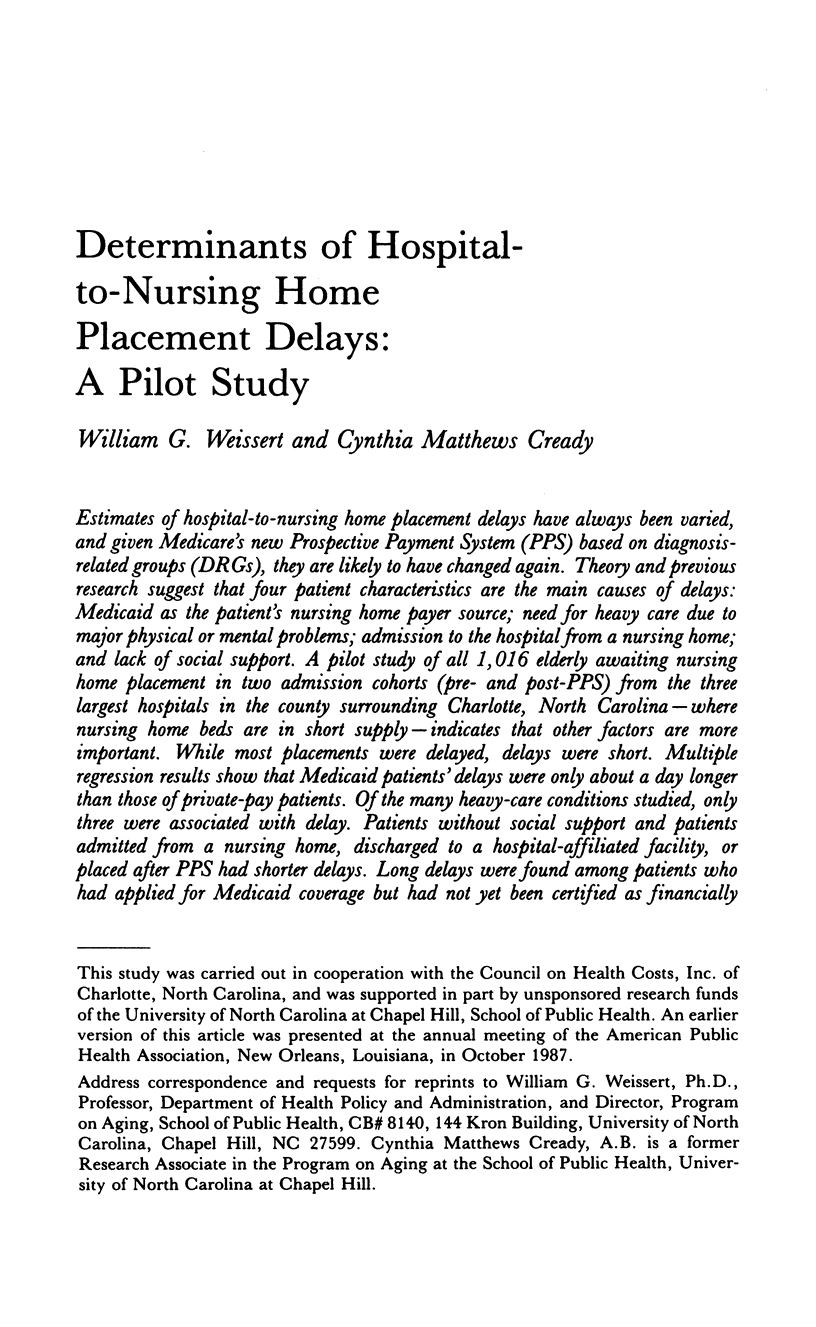
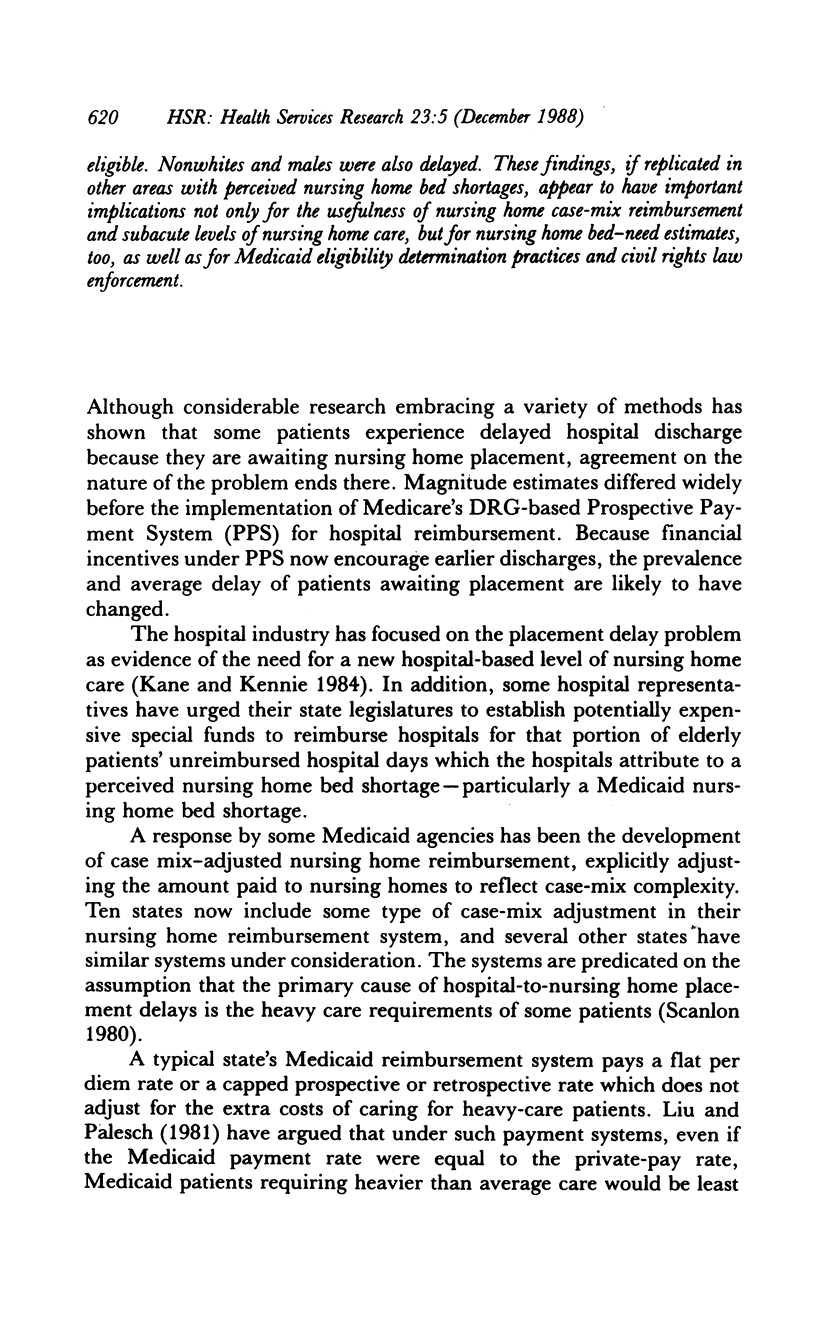
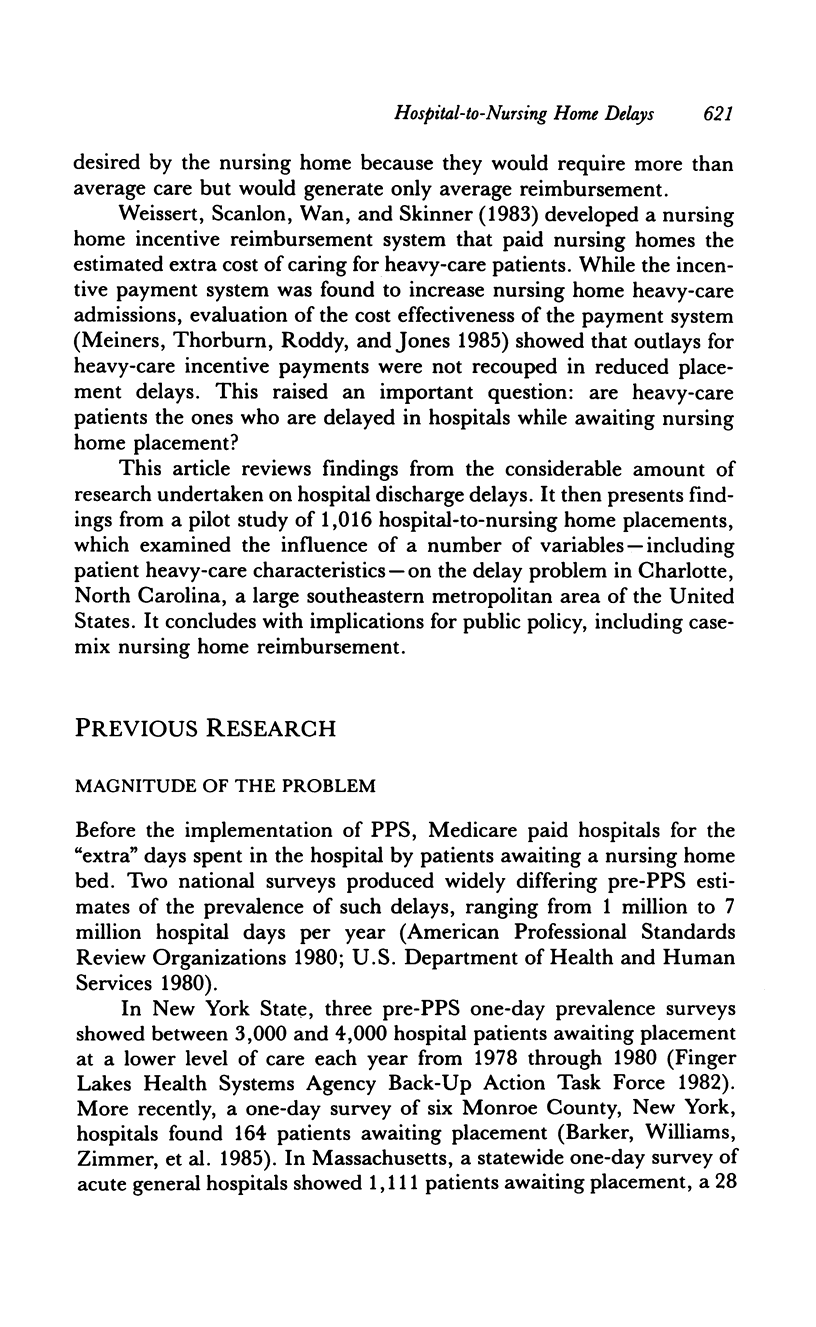
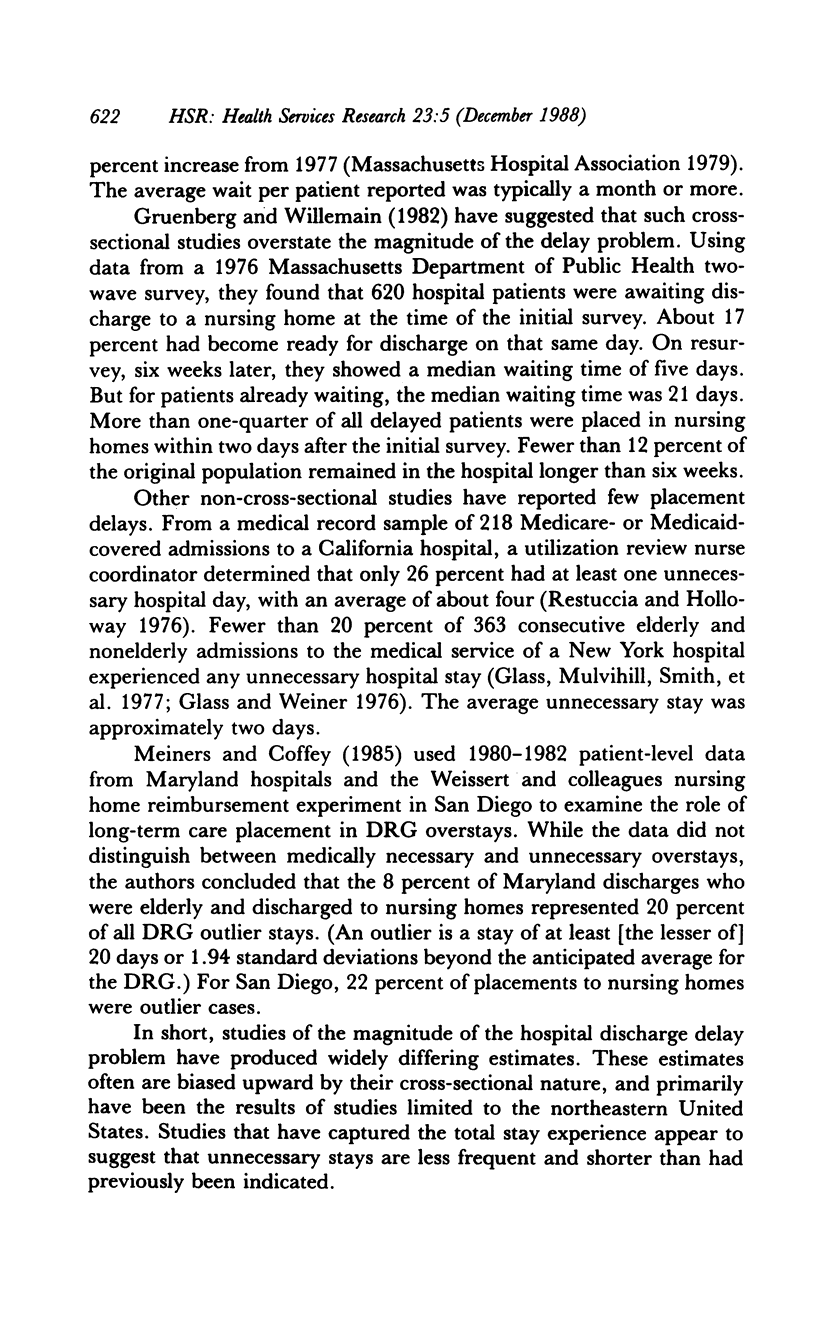
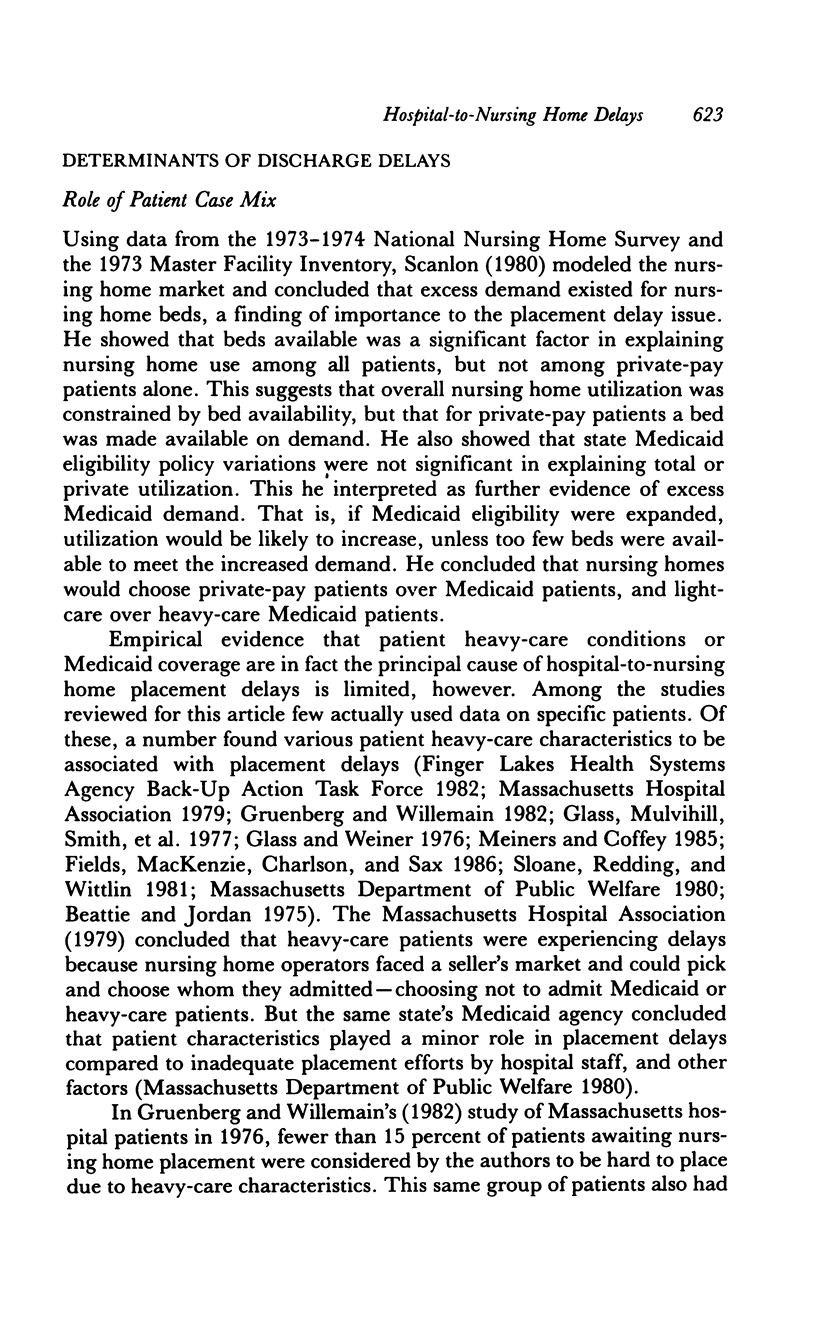
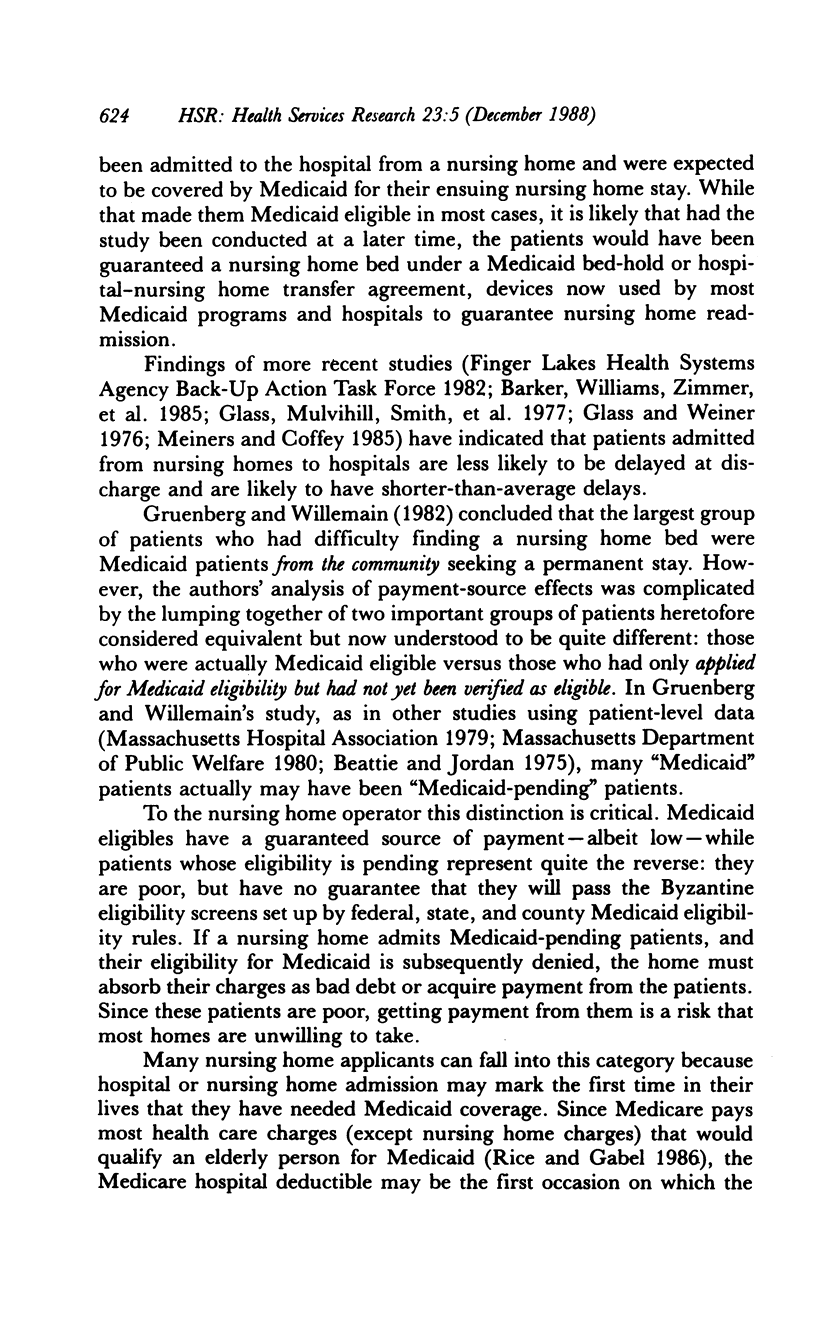
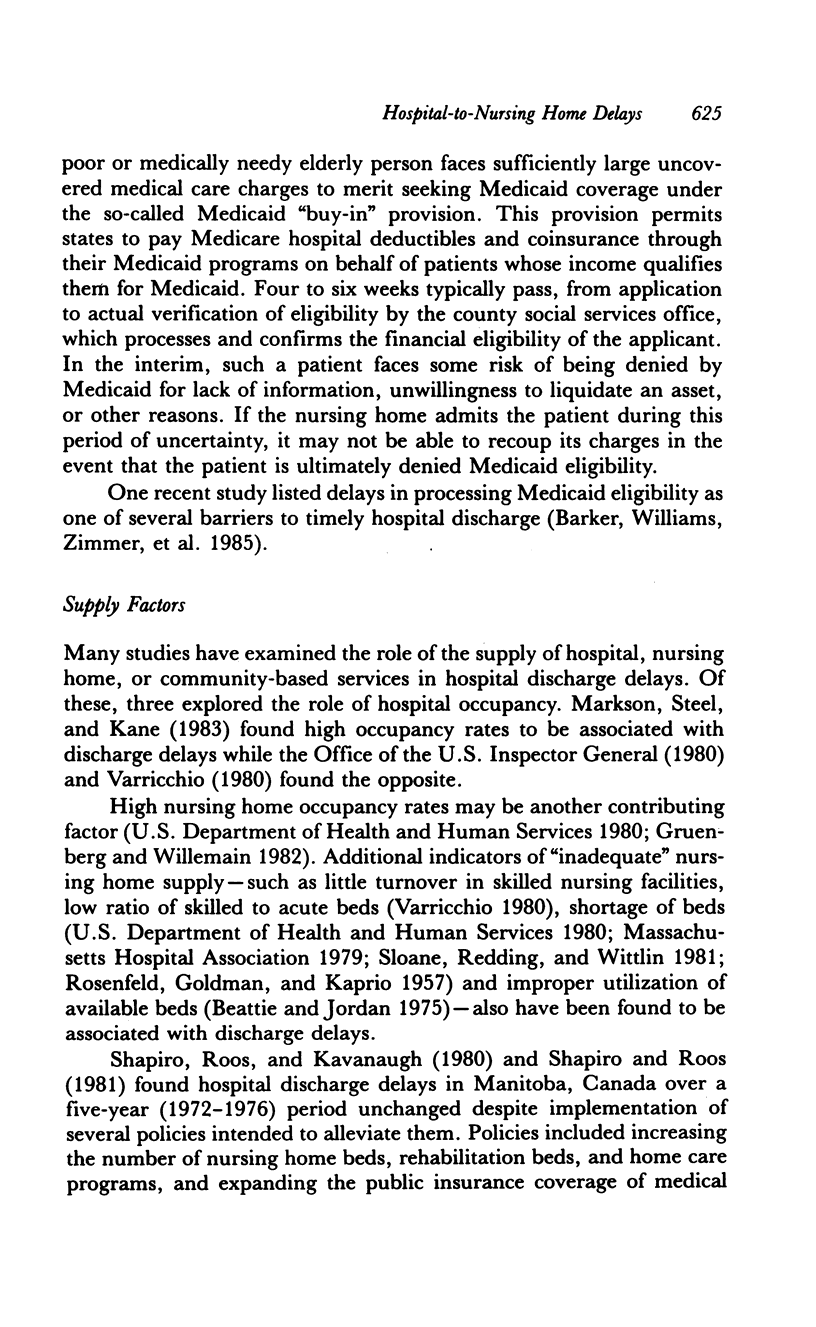
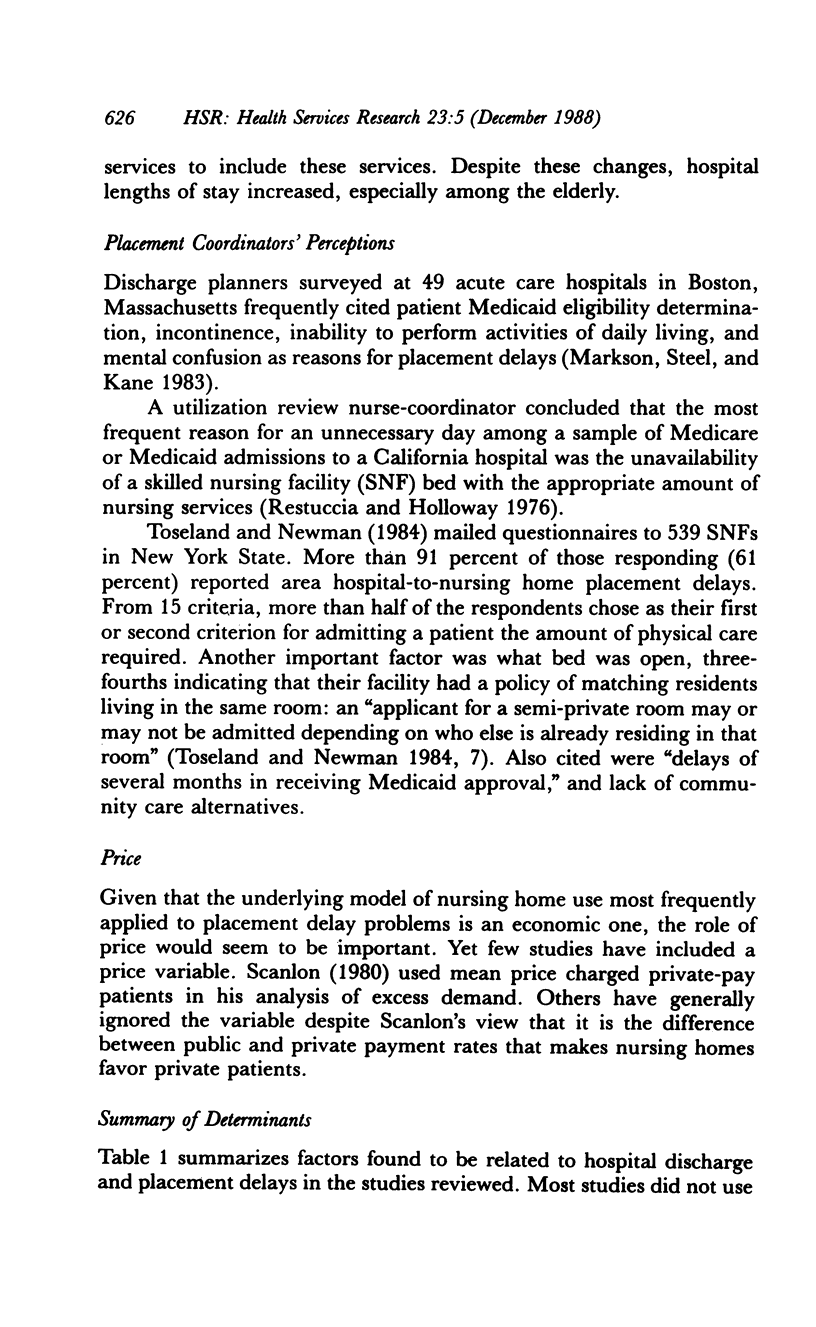
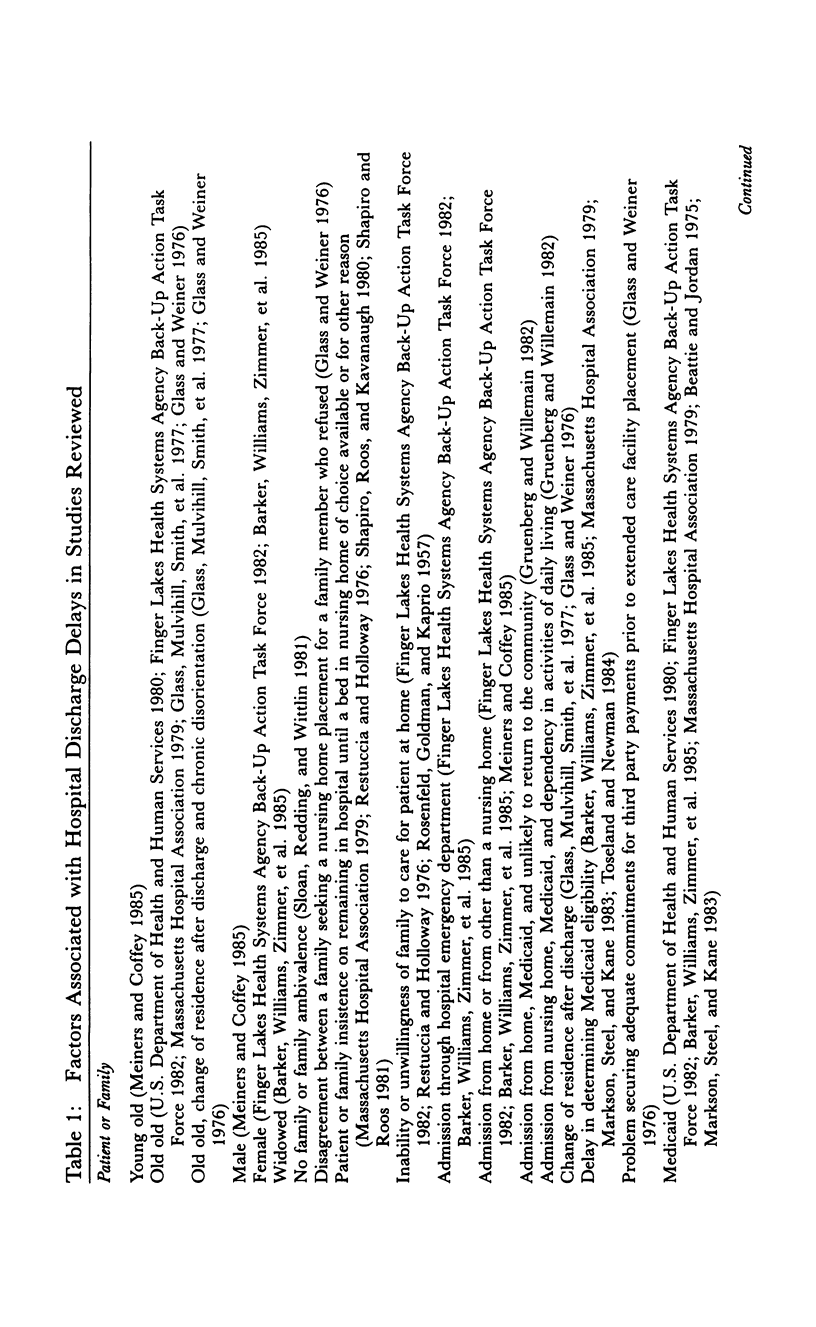
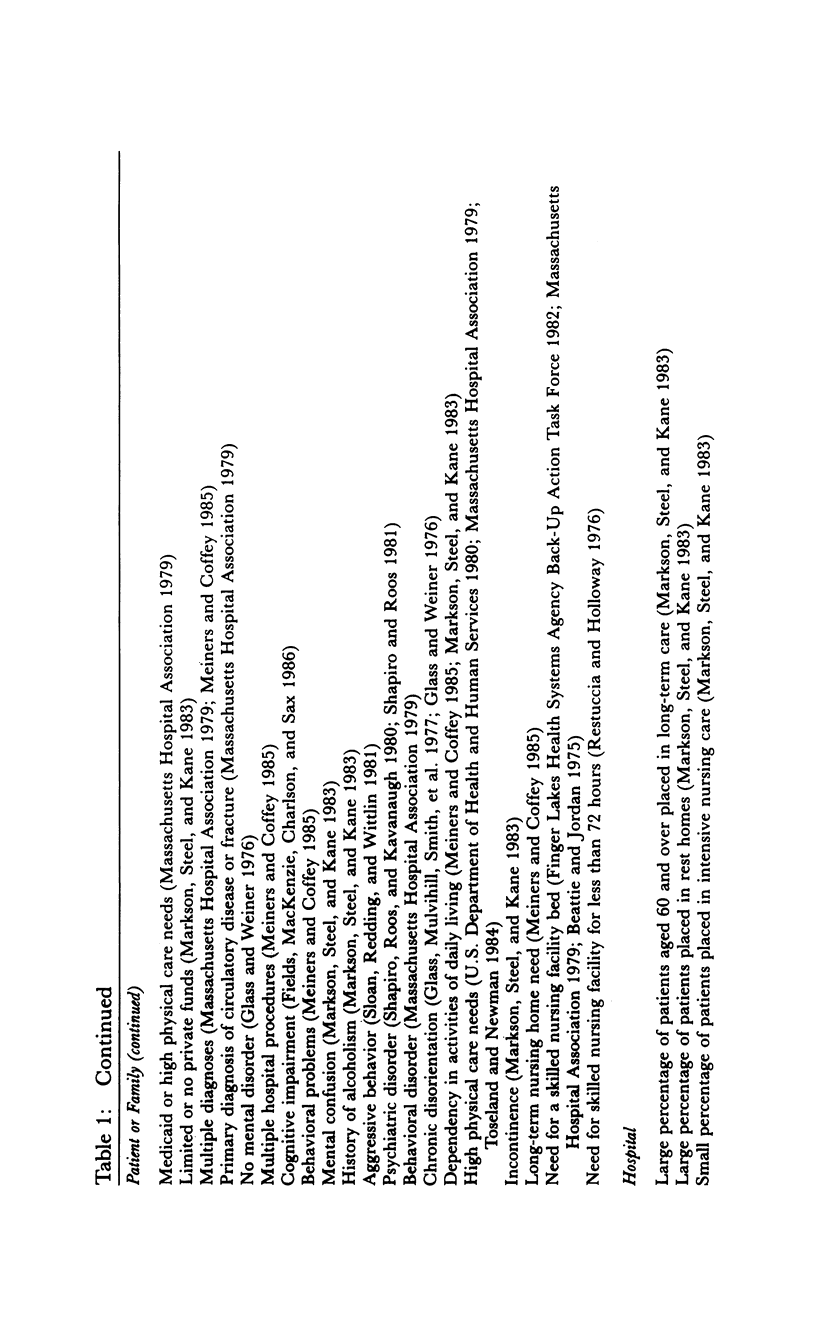
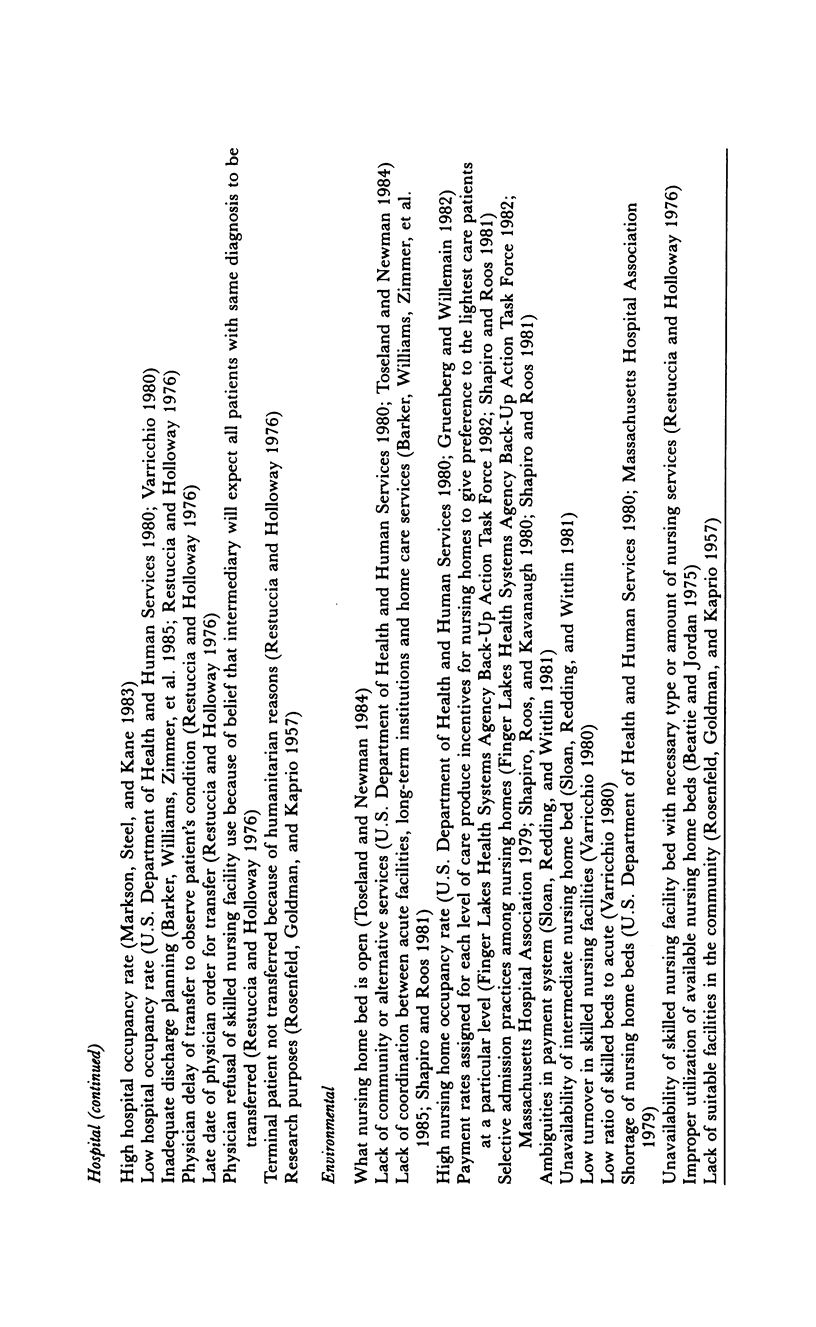
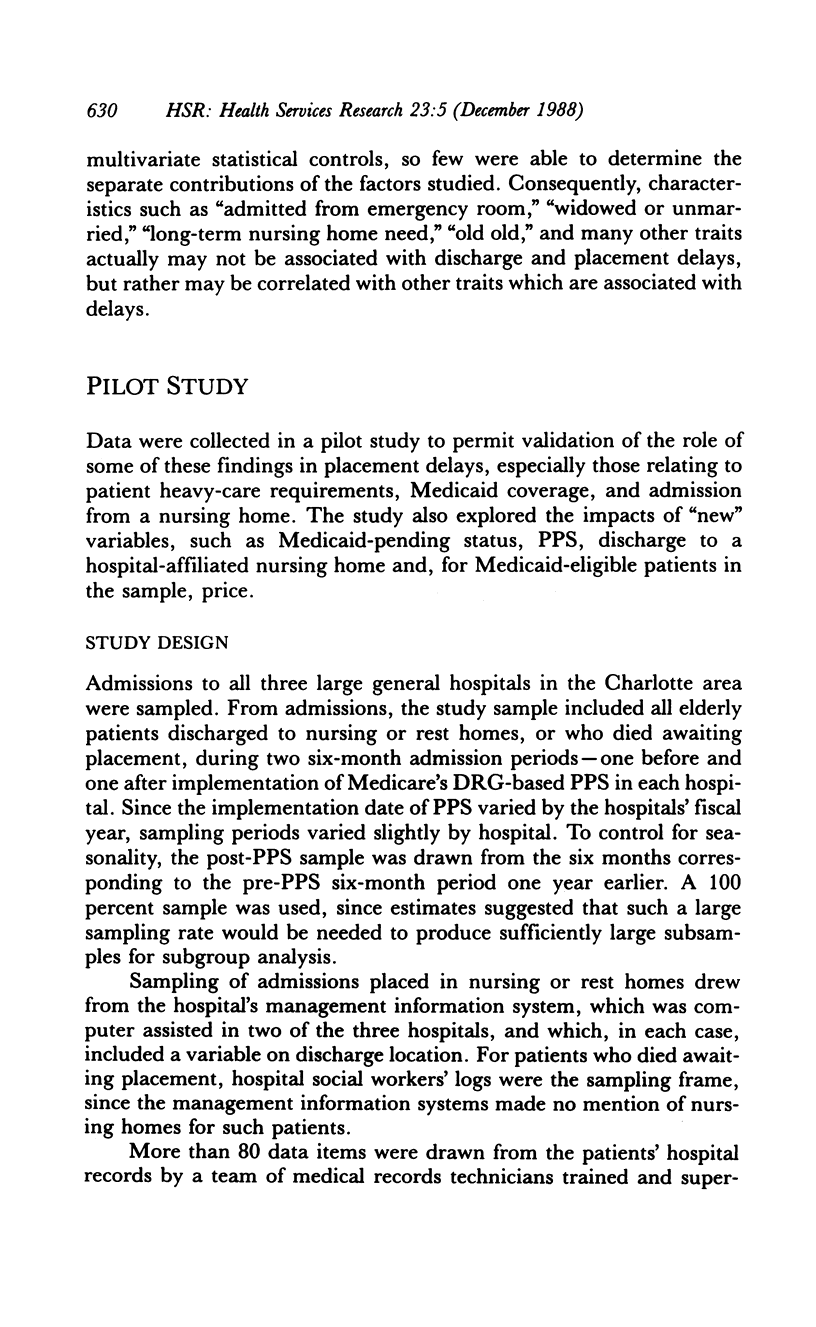
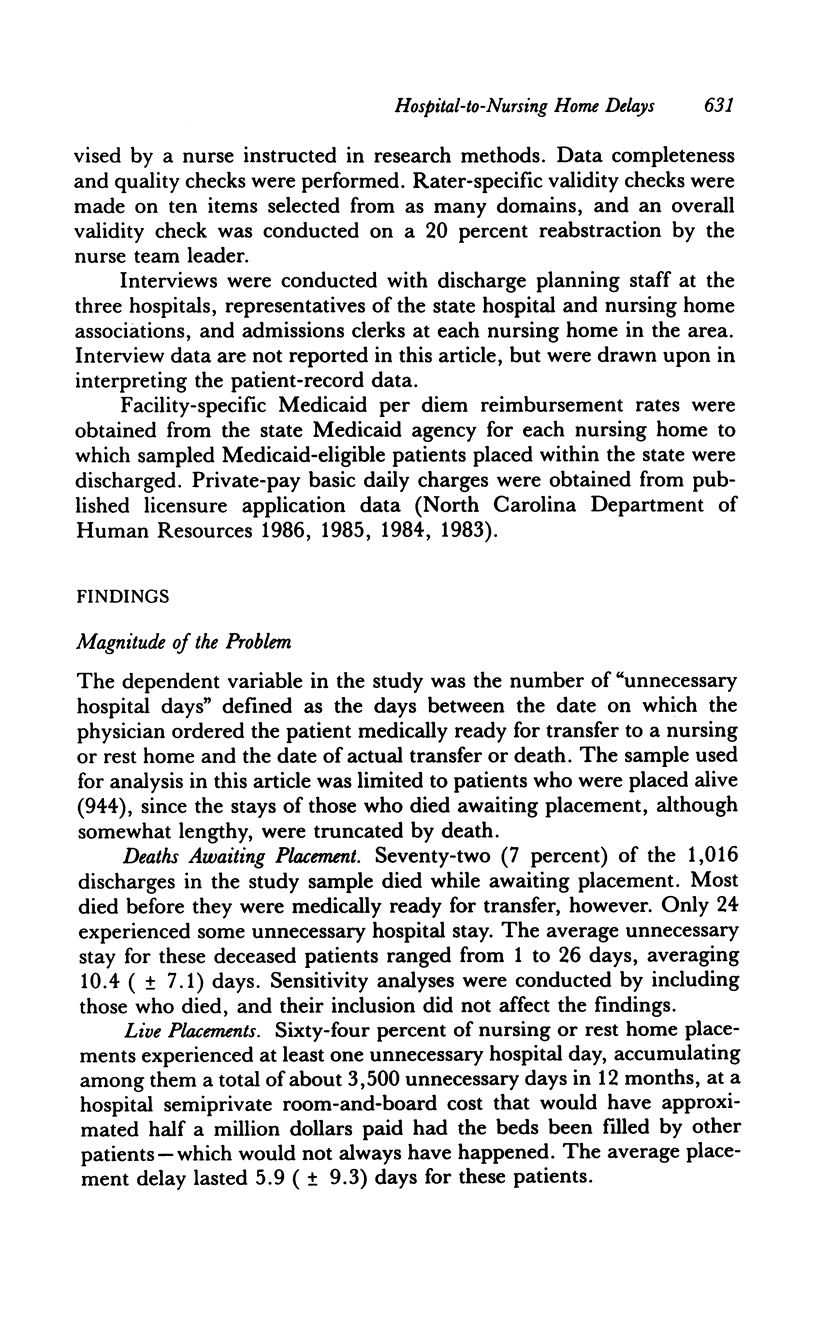
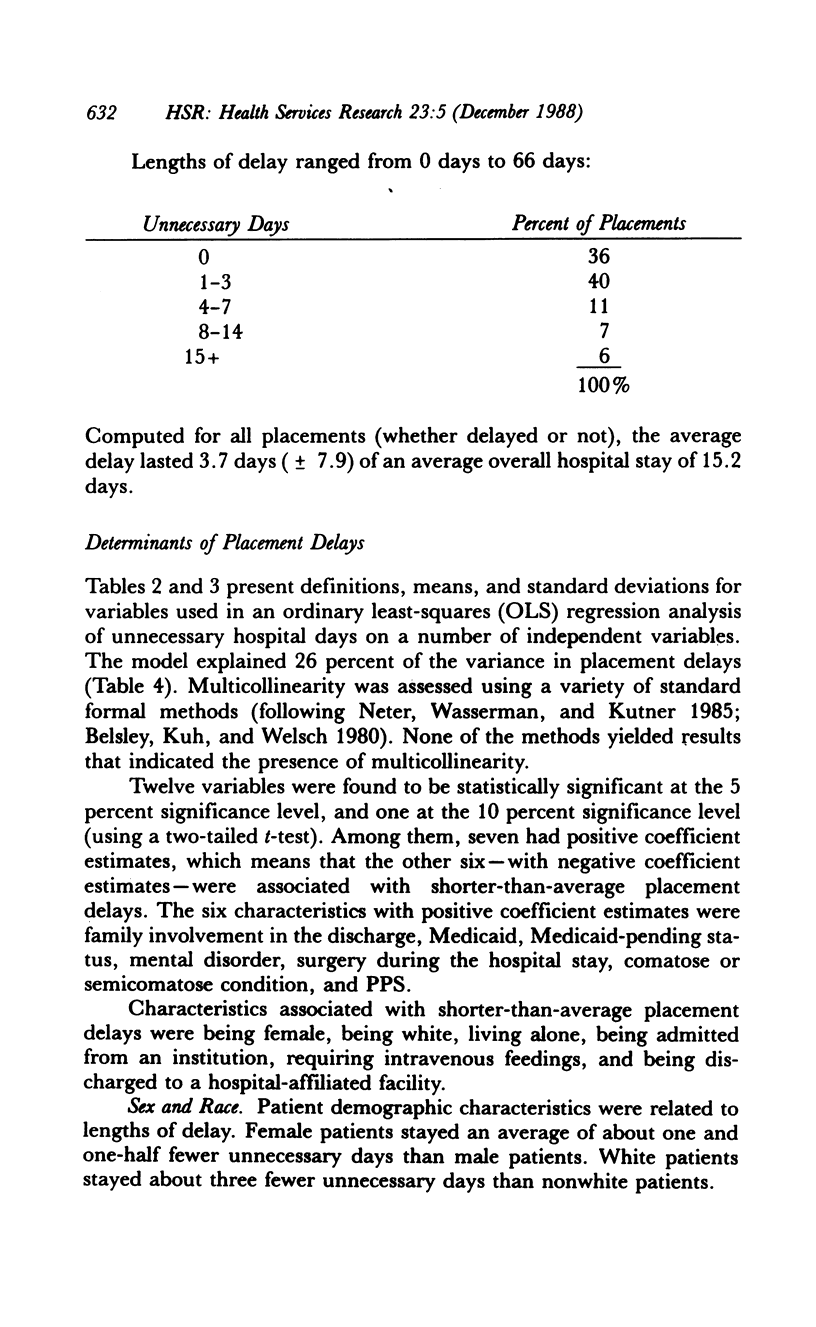
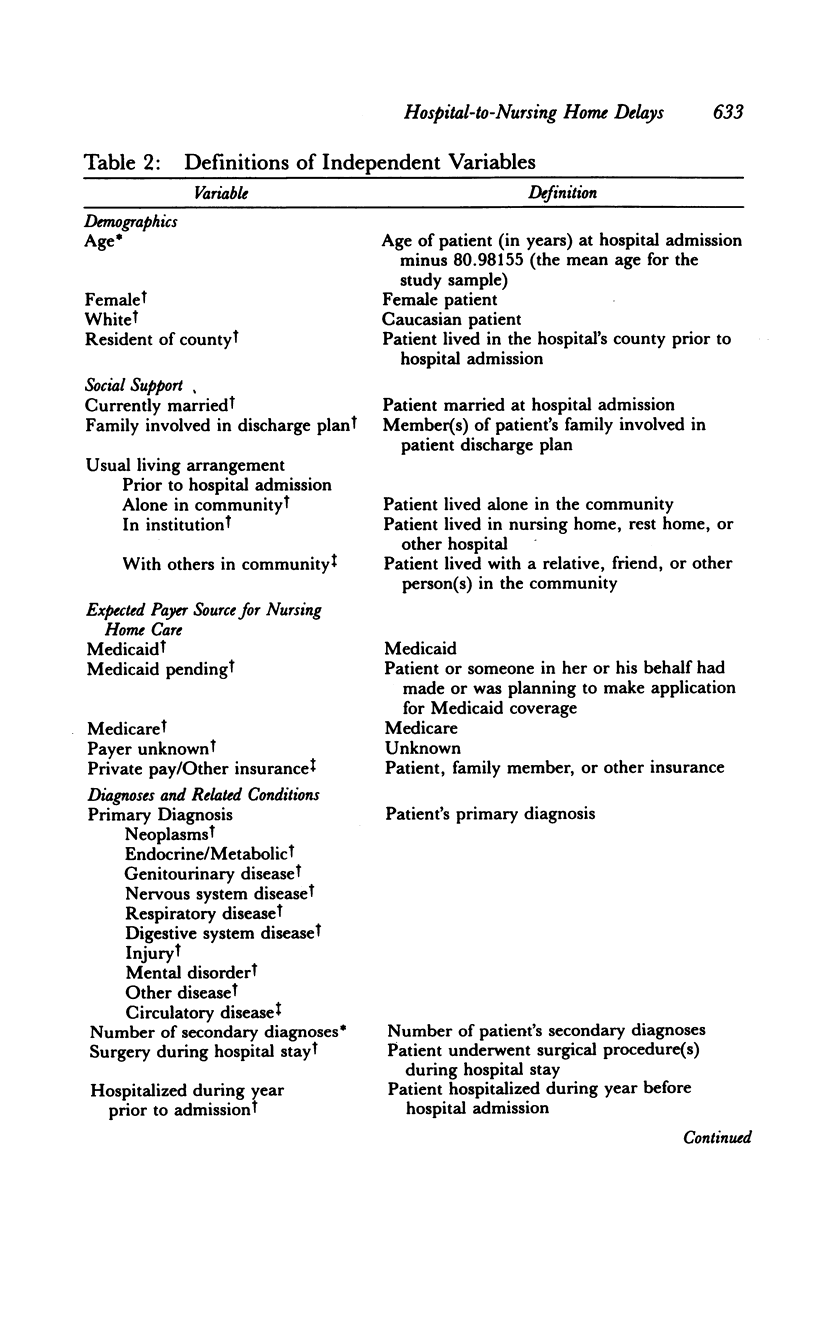
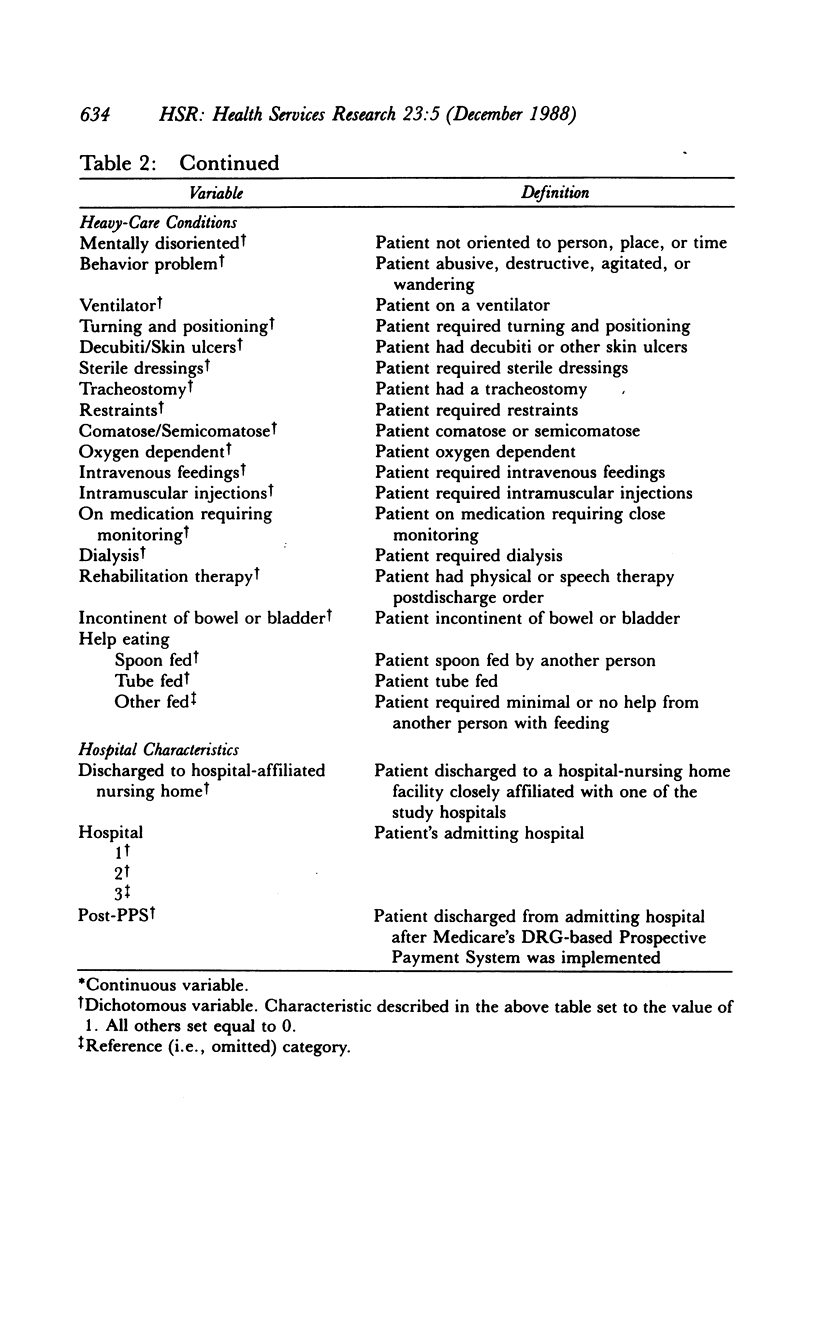
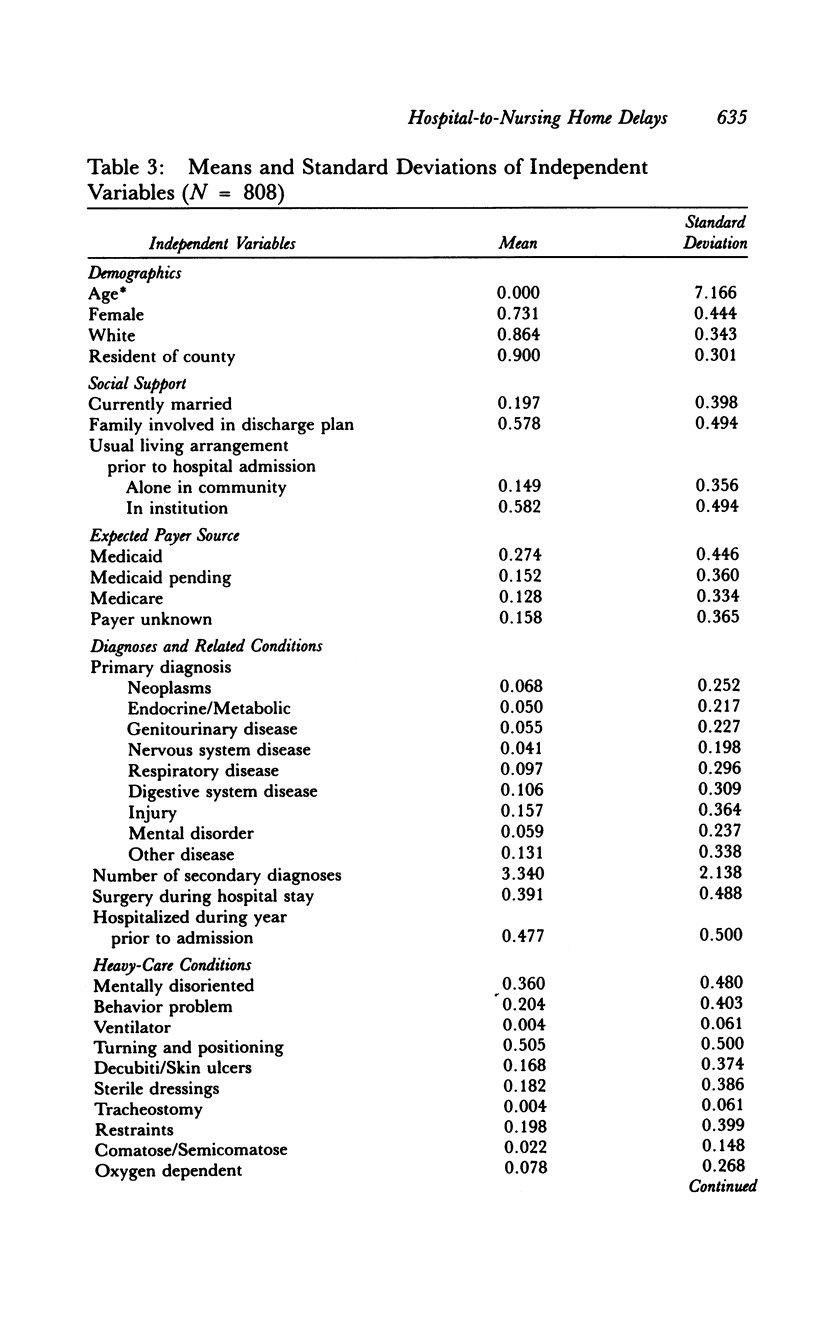
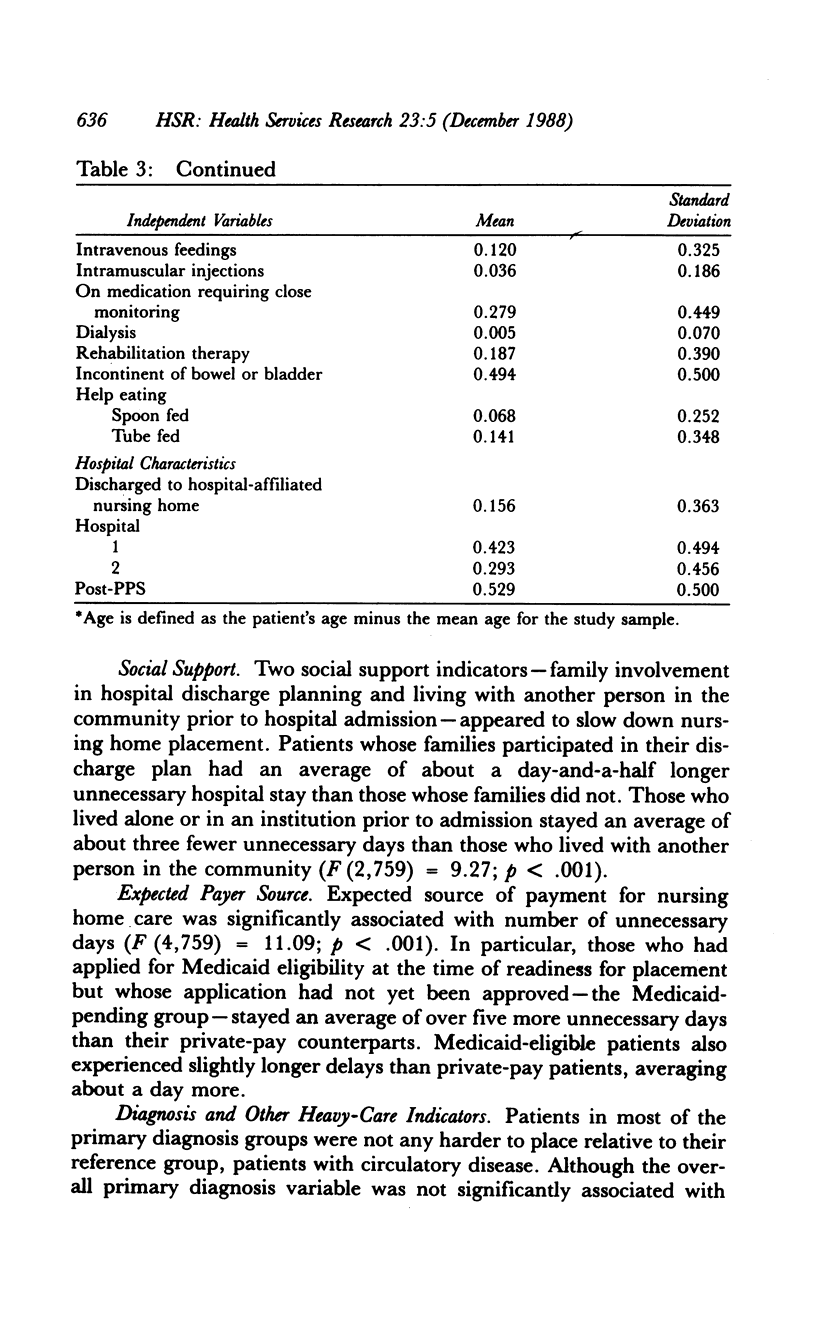
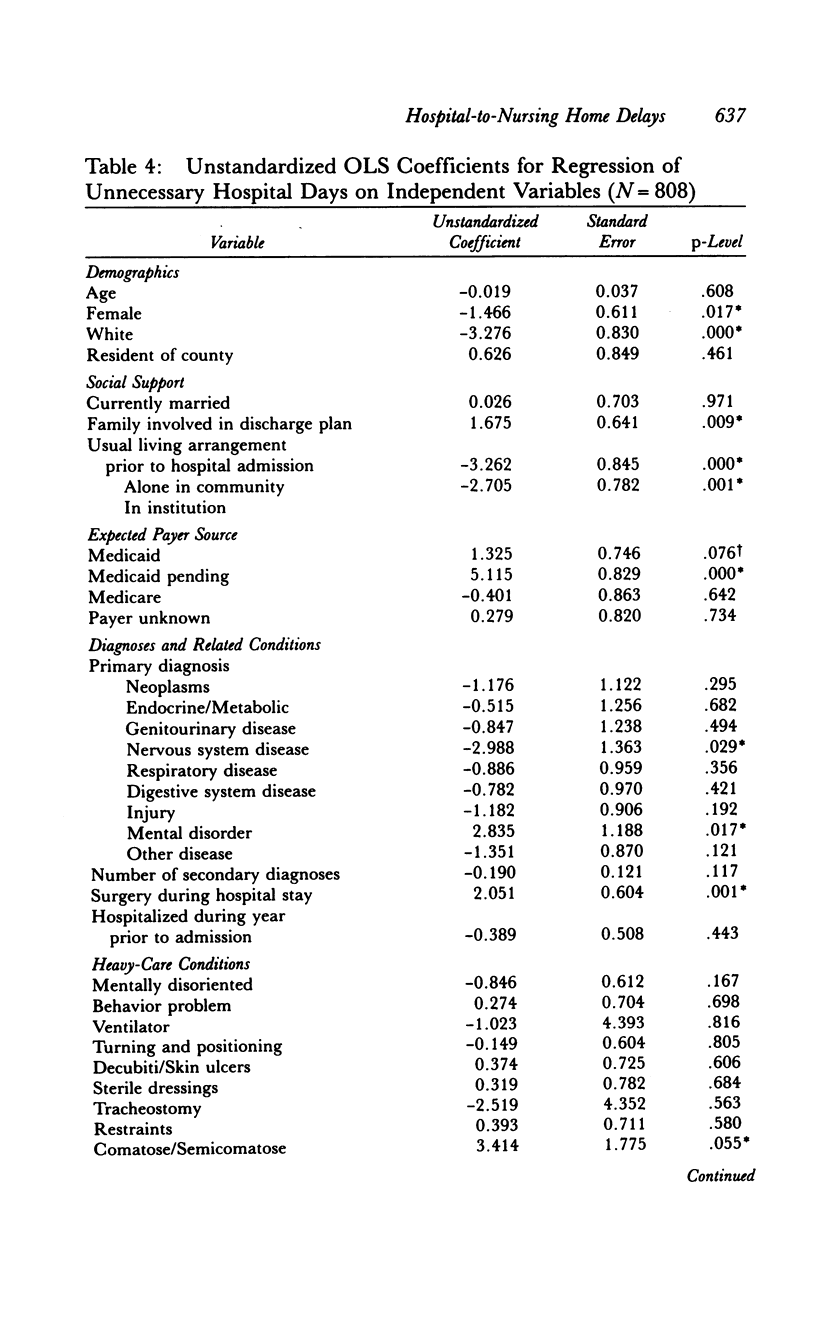
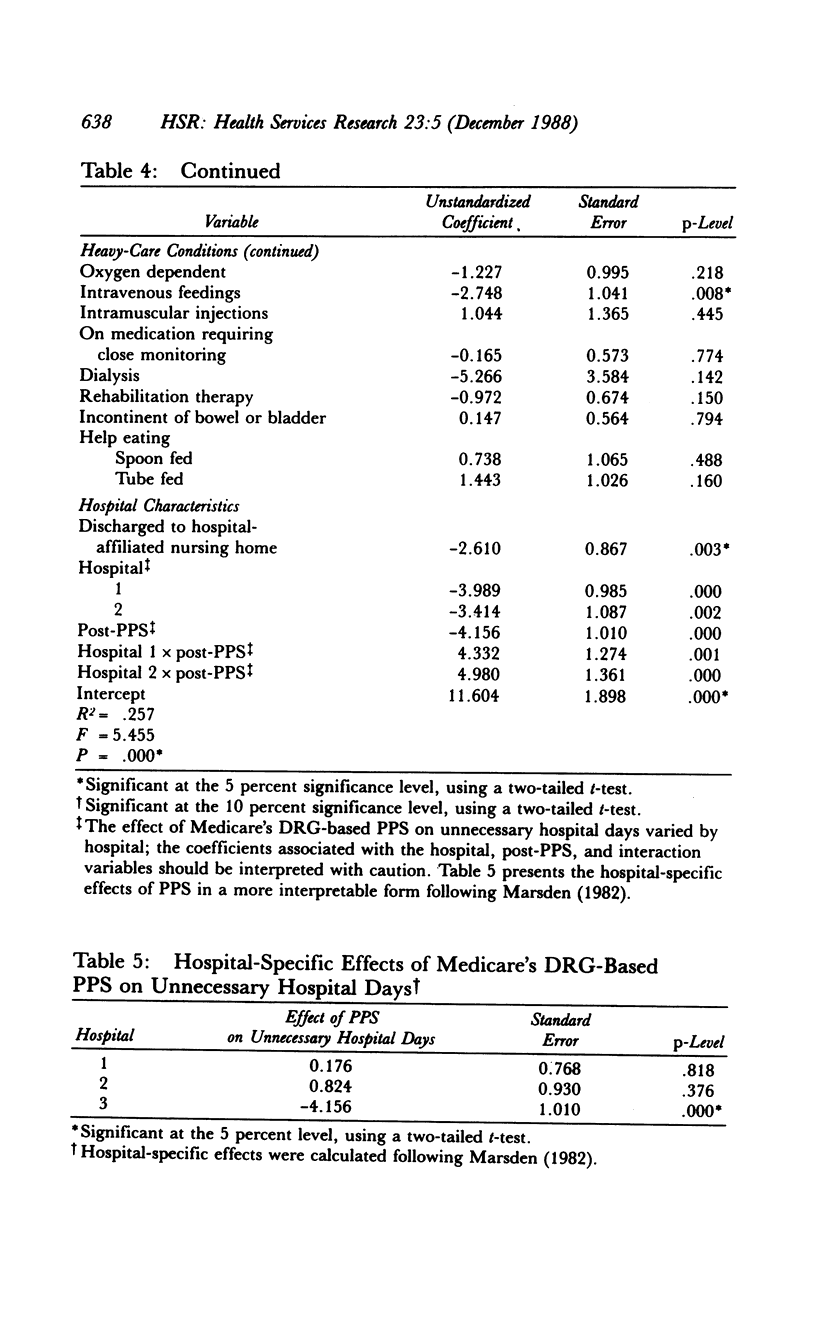
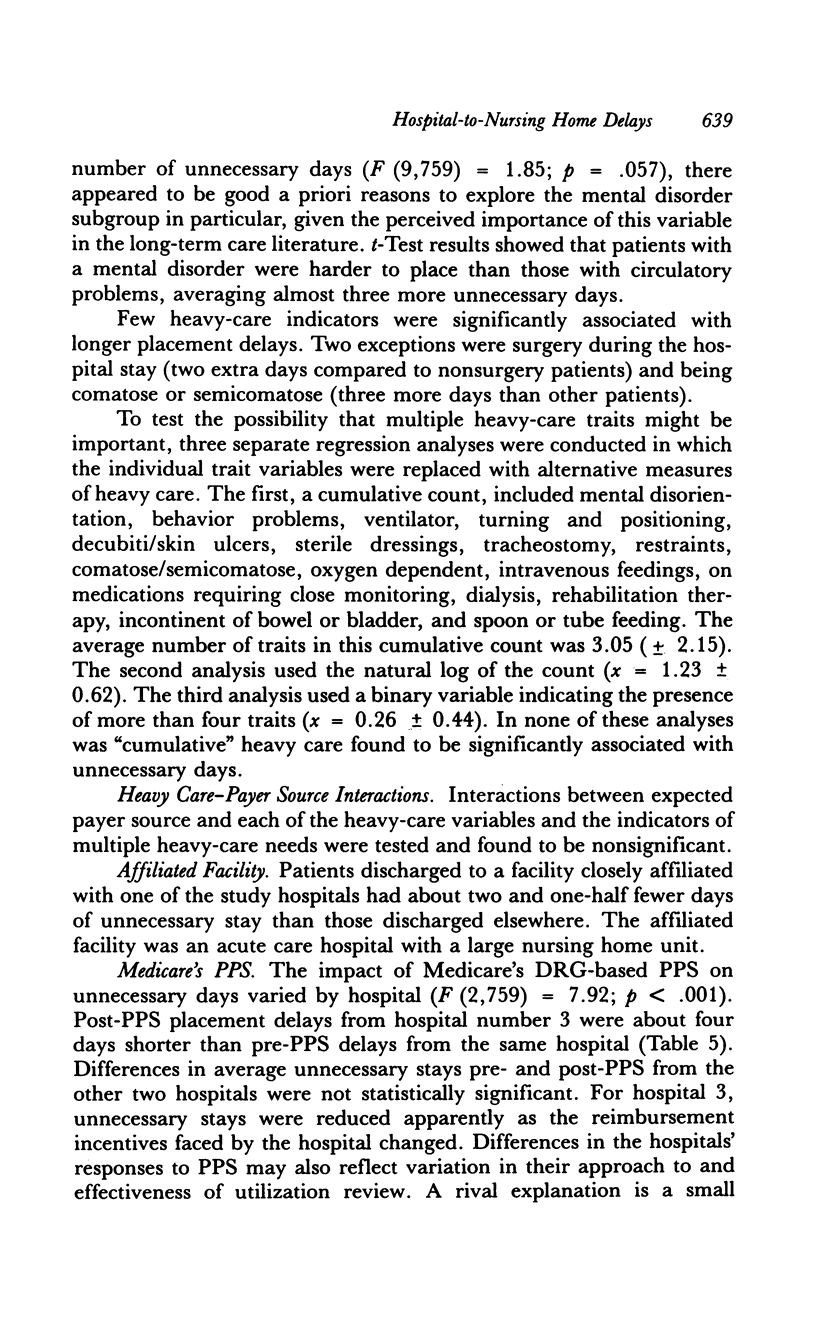
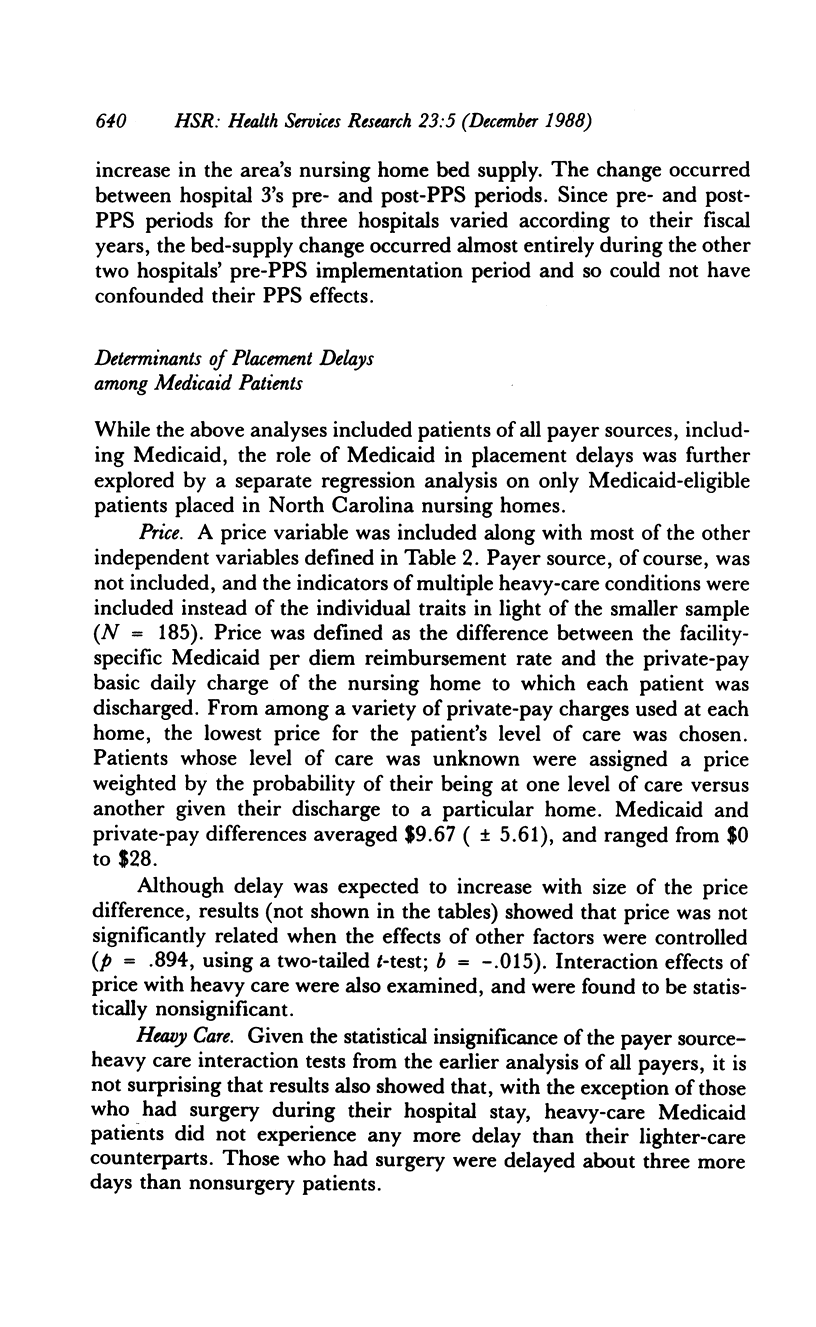
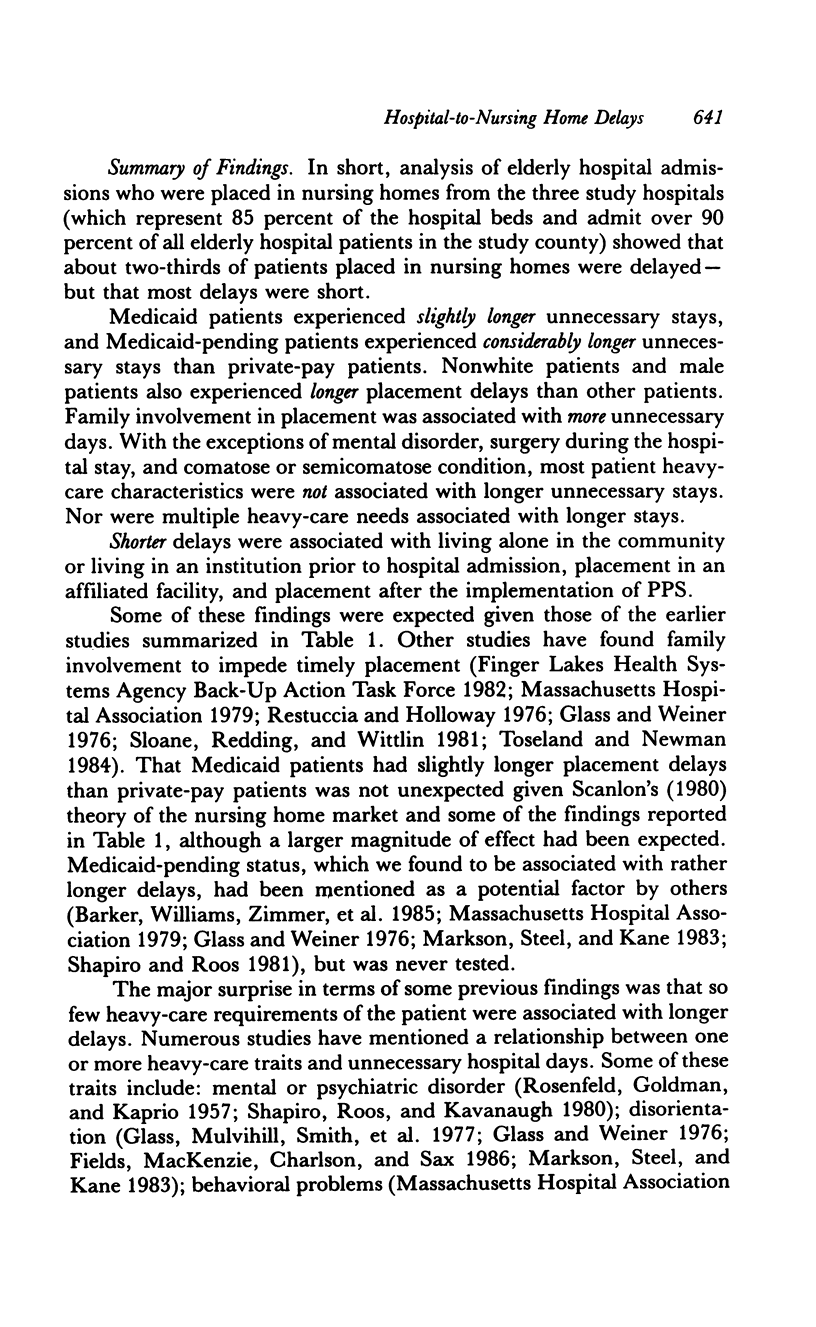
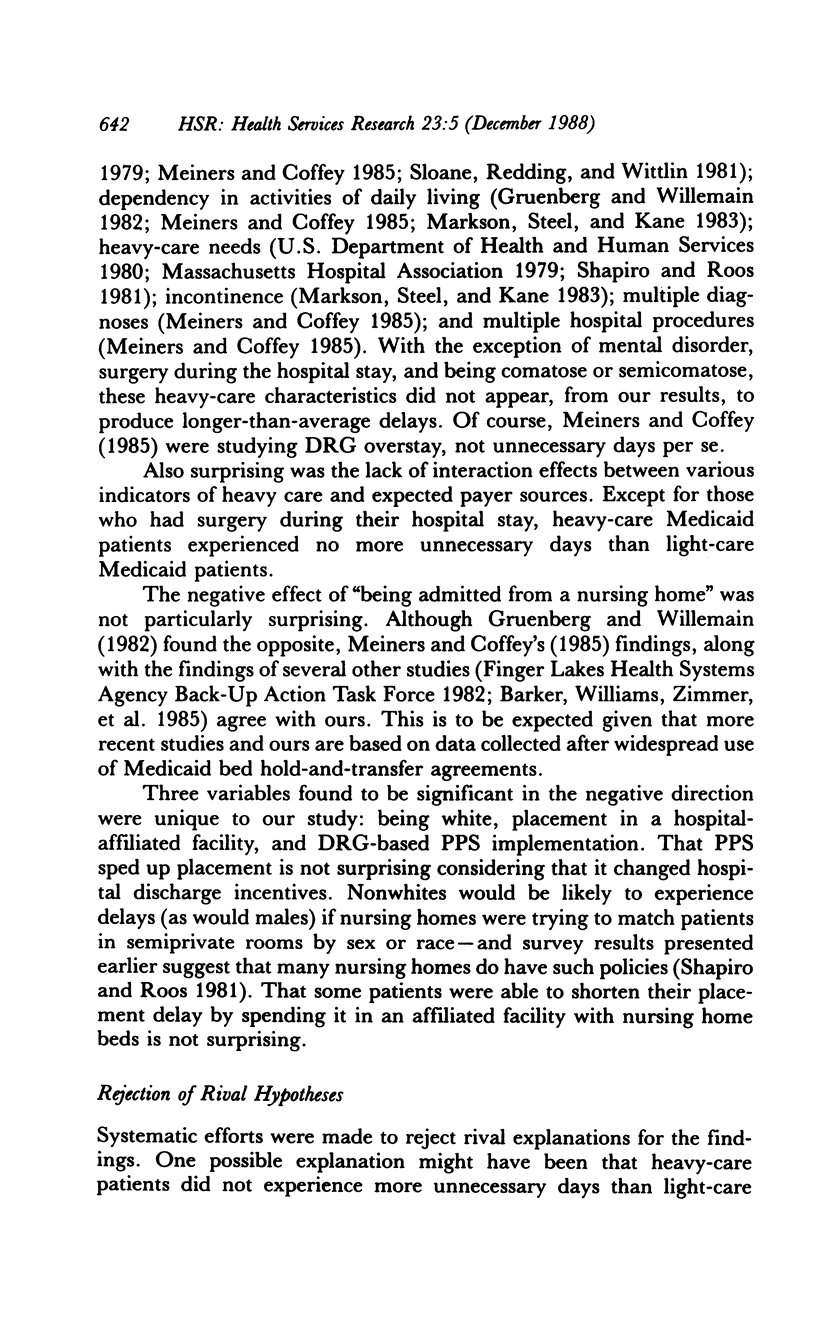
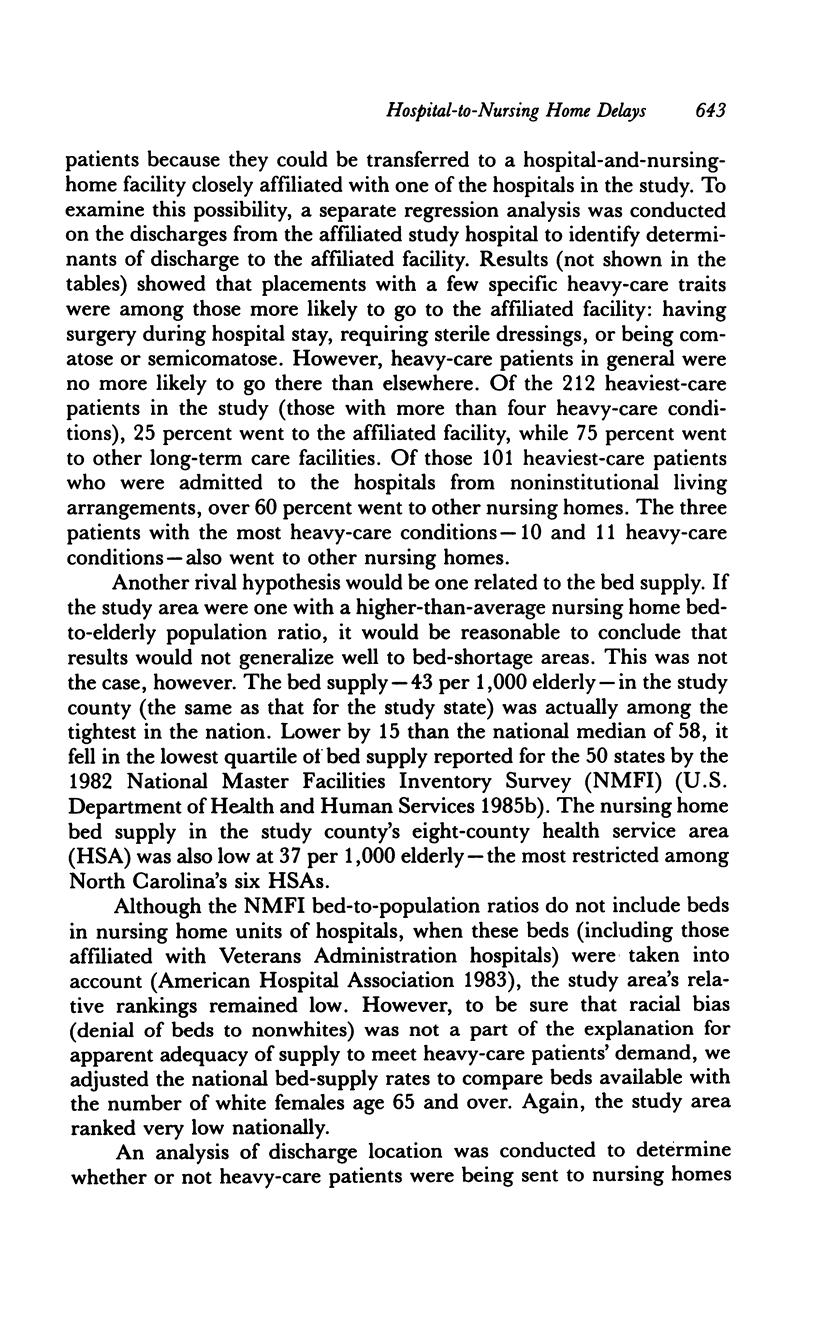
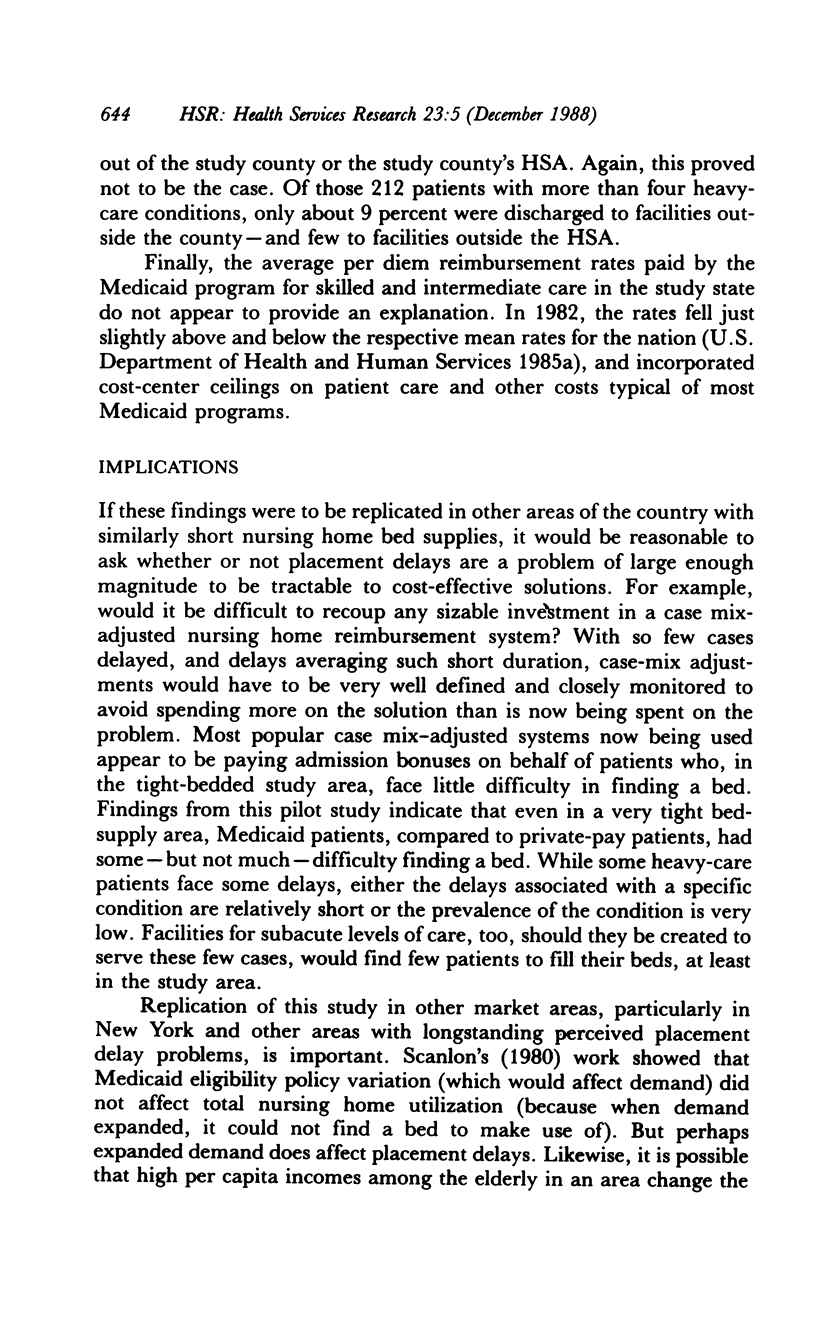
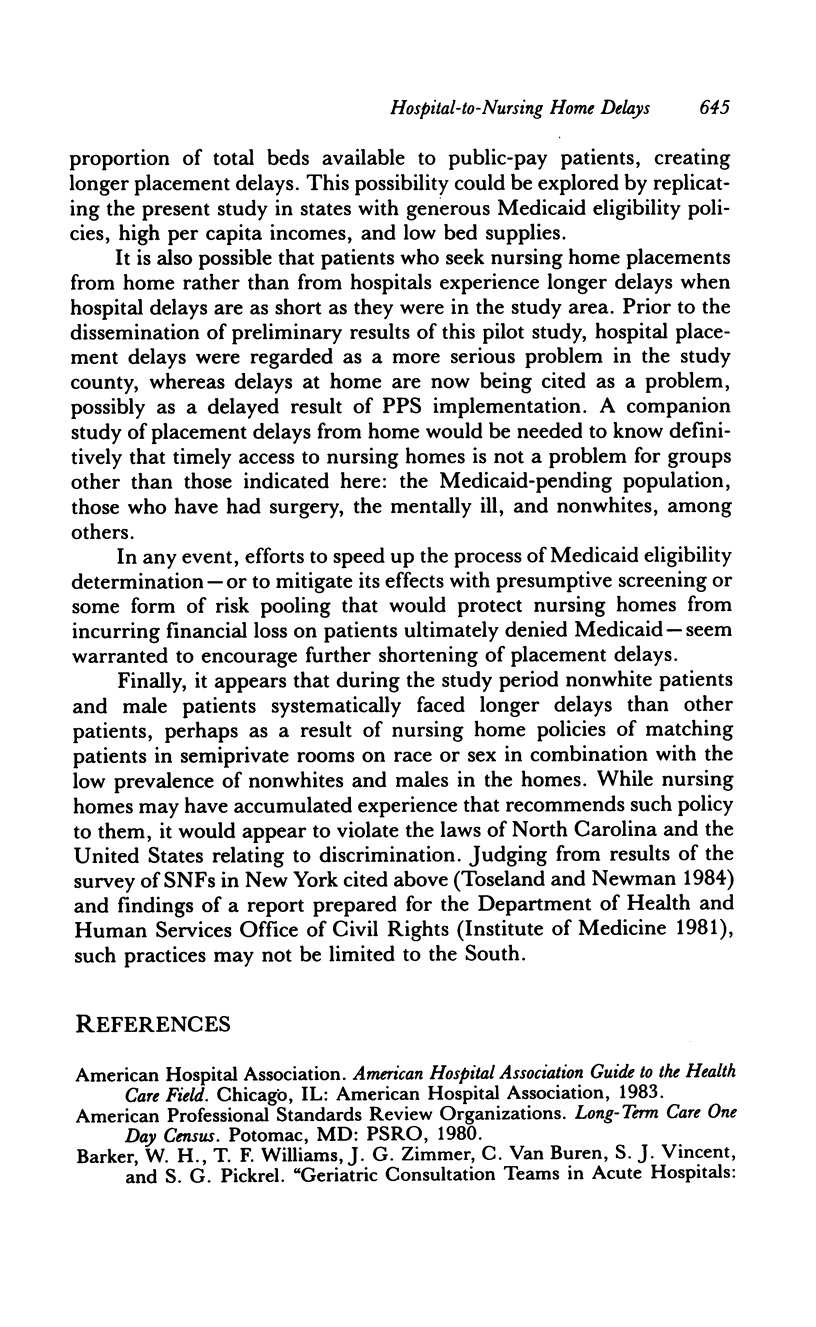
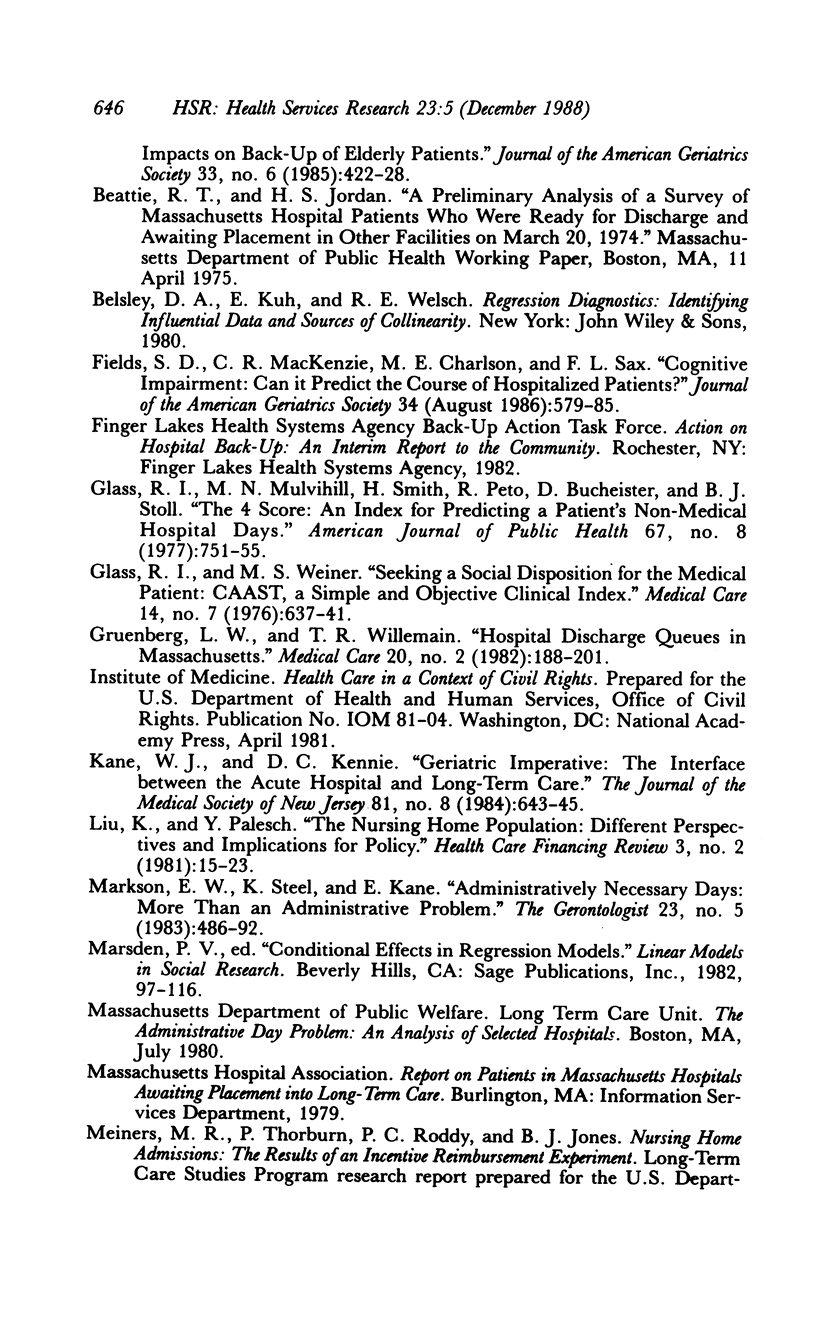
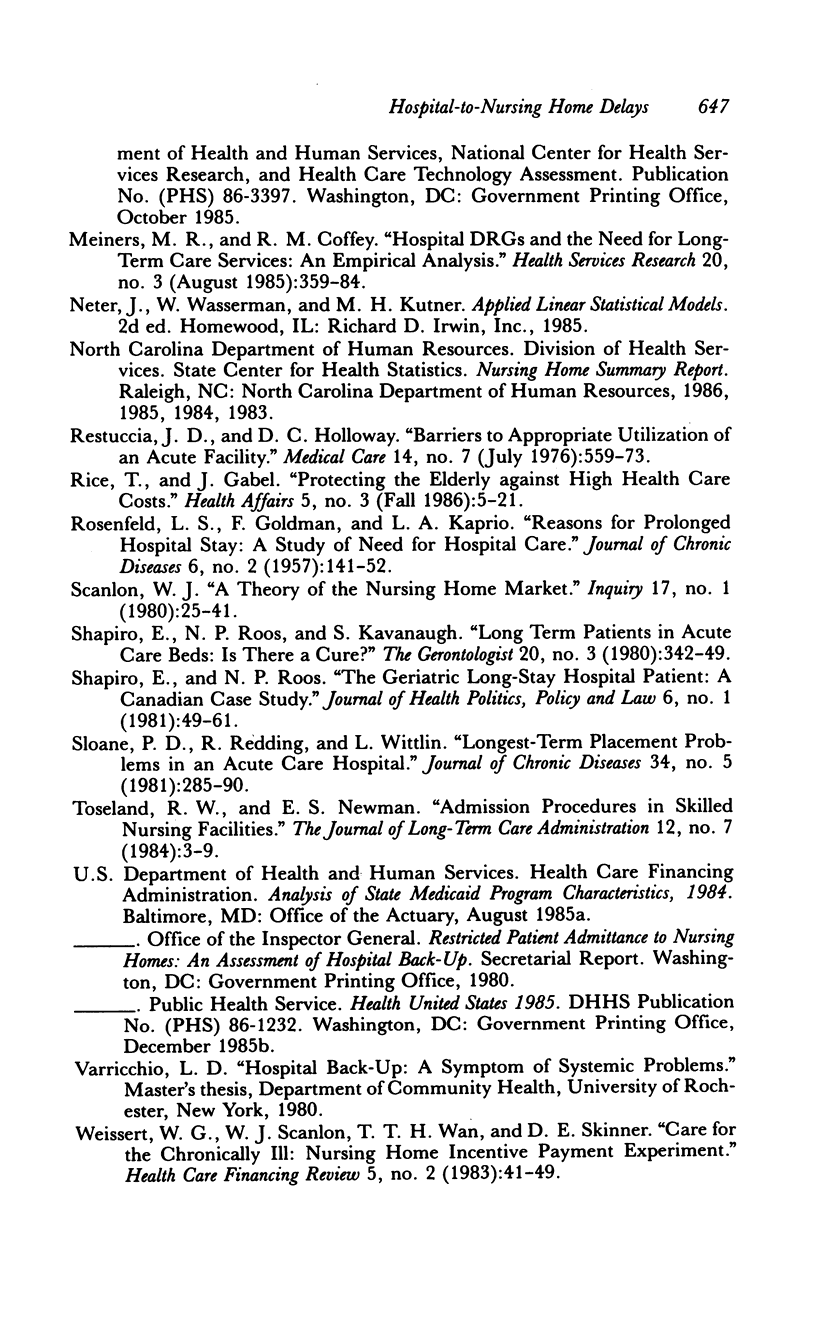
Selected References
These references are in PubMed. This may not be the complete list of references from this article.
- Fields S. D., MacKenzie C. R., Charlson M. E., Sax F. L. Cognitive impairment. Can it predict the course of hospitalized patients? J Am Geriatr Soc. 1986 Aug;34(8):579–585. doi: 10.1111/j.1532-5415.1986.tb05763.x. [DOI] [PubMed] [Google Scholar]
- Glass R. I., Mulvihill M. N., Smith H., Jr, Peto R., Bucheister D., Stoll B. J. The 4 score: an index for predicting a patient's non-medical hospital days. Am J Public Health. 1977 Aug;67(8):751–755. doi: 10.2105/ajph.67.8.751. [DOI] [PMC free article] [PubMed] [Google Scholar]
- Glass R. I., Weiner M. S. Seeking a social disposition for the medical patient: CAAST, a simple and objective clinical index. Med Care. 1976 Jul;14(7):637–641. doi: 10.1097/00005650-197607000-00009. [DOI] [PubMed] [Google Scholar]
- Gruenberg L. W., Willemain T. R. Hospital discharge queues in Massachusetts. Med Care. 1982 Feb;20(2):188–201. doi: 10.1097/00005650-198202000-00006. [DOI] [PubMed] [Google Scholar]
- Kane W. J., Kennie D. C. Geriatric imperative: the interface between the acute hospital and long-term care. J Med Soc N J. 1984 Aug;81(8):643–645. [PubMed] [Google Scholar]
- Liu K., Palesch Y. The nursing home population: different perspectives and implications for policy. Health Care Financ Rev. 1981 Dec;3(2):15–23. [PMC free article] [PubMed] [Google Scholar]
- Meiners M. R., Coffey R. M. Hospital DRGs and the need for long-term care services: an empirical analysis. Health Serv Res. 1985 Aug;20(3):359–384. [PMC free article] [PubMed] [Google Scholar]
- ROSENFELD L. S., GOLDMANN F., KAPRIO L. A. Reasons for prolonged hospital stay; a study of need for hospital care. J Chronic Dis. 1957 Aug;6(2):141–152. doi: 10.1016/0021-9681(57)90048-6. [DOI] [PubMed] [Google Scholar]
- Restuccia J. D., Holloway D. C. Barriers to appropriate utilization of an acute facility. Med Care. 1976 Jul;14(7):559–573. doi: 10.1097/00005650-197607000-00002. [DOI] [PubMed] [Google Scholar]
- Rice T., Gabel J. Protecting the elderly against high health care costs. Health Aff (Millwood) 1986 Fall;5(3):5–21. doi: 10.1377/hlthaff.5.3.5. [DOI] [PubMed] [Google Scholar]
- Scanlon W. J. A theory of the nursing home market. Inquiry. 1980 Spring;17(1):25–41. [PubMed] [Google Scholar]
- Shapiro E., Roos N. P., Kavanagh S. Long term patients in acute care beds: is there a cure? Gerontologist. 1980 Jun;20(3 Pt 1):342–349. doi: 10.1093/geront/20.3_part_1.342. [DOI] [PubMed] [Google Scholar]
- Shapiro E., Roos N. P. The geriatric long-stay hospital patient: a Canadian case study. J Health Polit Policy Law. 1981 Spring;6(1):49–61. doi: 10.1215/03616878-6-1-49. [DOI] [PubMed] [Google Scholar]
- Sloane P. D., Redding R., Wittlin L. Longest-term placement problems in an acute care hospital. J Chronic Dis. 1981;34(6):285–290. doi: 10.1016/0021-9681(81)90033-3. [DOI] [PubMed] [Google Scholar]
- Weissert W. G., Scanlon W. J., Wan T. T., Skinner D. E. Care for the chronically ill: nursing home incentive payment experience. Health Care Financ Rev. 1983 Winter;5(2):41–49. [PMC free article] [PubMed] [Google Scholar]


